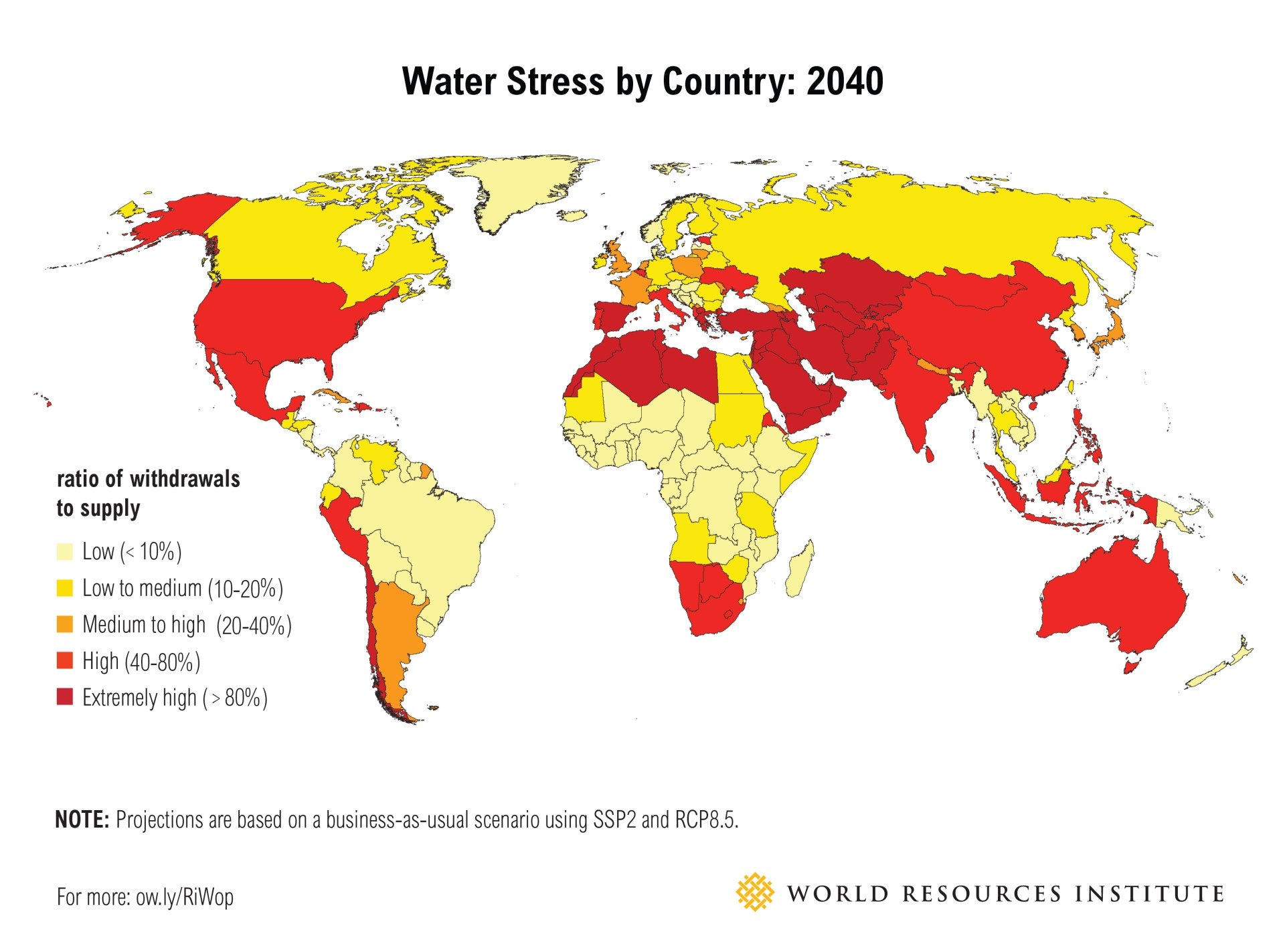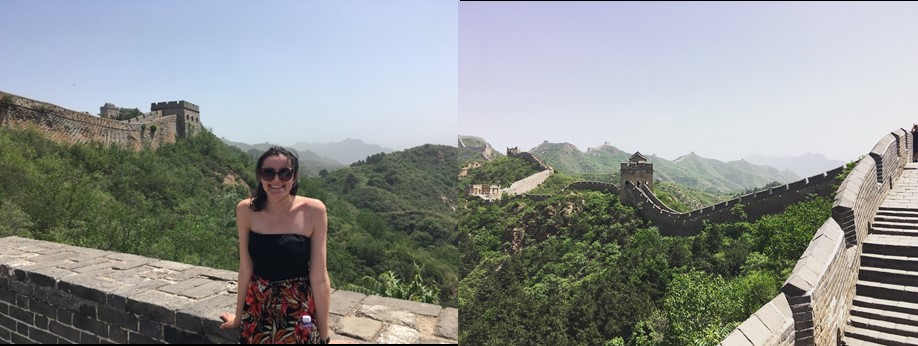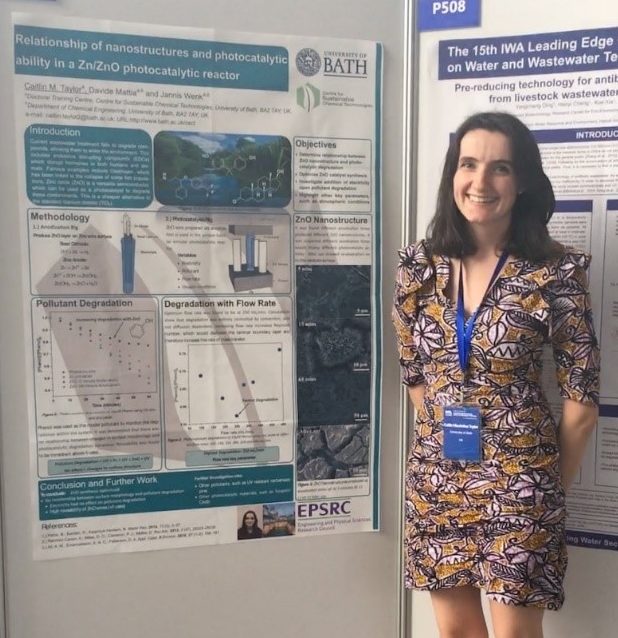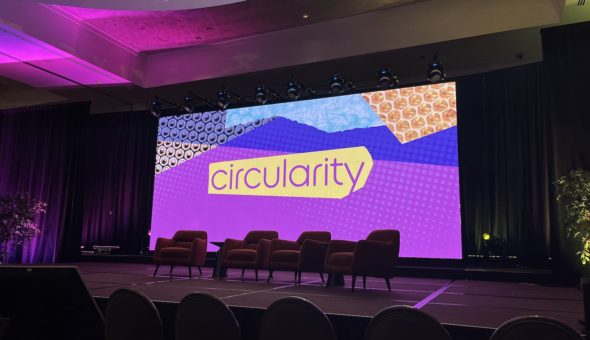Caitlin is a third year PhD student working with Dr Jannis Wenk on photocatalysis for wastewater treatment to remove emerging contaminants.
In the last week of May, I travelled to China for the International Water Association (IWA) 15th Leading Edge Technology (LET) conference held in Nanjing. I had spent a few hours on Duolingo before my trip, so my confidence was riding high as I arrived into Beijing (Fun Fact #1: “Bei” means North, “Nan” means South and “Jing” means Capital). My confidence was short lived. Visiting somewhere so different from what you’re used to, it’s like being a child, desperately watching what everyone else is doing, hoping to not make a mistake (I made many) and simply wanting to fit in. Beijing is home to a mere 21.71 million people (yup, I’ve triple checked) and many historic landmarks to stretch my tourist legs. Hotspots include: the forbidden city (not so forbidden anymore, fantastic gift shops though), Tiananmen Square and also an easy to get to wall (Fun Fact #2: The great wall is over 8000 km in length as it follows China’s exact terrain, i.e approximately the same distance as a plane to fly from Beijing to London).
Taking a break on the Great Wall of China
To travel to Nanjing I took the Bullet train, which travels at top speeds of 350 km/hr and at a bargain price - it really does put National Rail to shame. Nanjing is an ancient city, known as one of China’s prettiest cities. (Fun side-note: On entering Nanjing I was held by police due to mistaken identity - my CCTV image matched a photo of a Chinese citizen who I assume was wanted. As there was no common language between myself and the police officers, I can’t really say what was going on but I had my photos taken and I was held in a room for a brief period of time. I was allowed to go on my way after 10 minutes, without involving the British embassy or our foreign secretary, so all things considered a success!) Nanjing sits on the river Yangtze, which is the world’s third longest river (Fun fact number #3), therefore making it a perfect location for a water conference. The IWA LET conference is a chance for the most state of the art water research to be showcased, this includes the really out there stuff usually presented by the rockstars of the water industry so I was very excited for the opportunity to attend!
Presenting my poster at the conference
Most of us will just flush the toilet, wash the drain and never think of our wastewater again. Unless of course, you’re a water scientist, in which case we spend a lot of time thinking about it. Wastewater is one of the most complex matrices you can imagine, and the conference displayed that by covering a wide variety of topics such as rural water, urban, industrial, de-centralized, resource recovery, potable and far more. This conference was a fantastic opportunity to get outside my comfort zone and learn more about the water sector in general. Here are the four areas of the water sector, which will see rapidly change and develop in the near future:
- Blue/Green Infrastructure
Also known as Sponge cities, these cities include green spaces to allow water absorption, which will then be slowly released like a sponge. These green spaces include wetlands, green rooftops/walls and rain gardens. These aim to reuse up to 70% rain water, preventing flooding by acting as rain storage, but have also been shown to be successful in treating grey water (the water from sinks and showers). Plants, which have been specifically chosen to suit each cities climate, have been shown to successfully process the chemicals in wastewater. Some snags include the plants are still struggling with bacteria such as E.coli, but scientists are working away at these problems.
- Big Data
With increasingly low costs to produce sensors, the ability to monitor and control water treatment with exquisite detail is becoming a reality. The addition of sensors within our sewage networks will act as the ears and eyes of the water system and could allow for the ability to monitor disease and the presence of bacteria. It can be used to reduce flood damage, as a weather warning of flood flashes will send of signals to open and close valves along the network, thus holding water in high risk areas as retention points and allowing water to keep flowing. This has the potential to allow for water to be de-centralized and allow for water treatment to be tailored for each individual areas needs.
- Emerging contaminates & Antibiotic resistance
When you use pharmaceuticals or personal care products it leaves clues in your wastewater. These contaminants, of various different chemical properties, are difficult to remove using classic wastewater treatment plants and then can enter the environment. Antibiotic resistance (AR) uses water as its method to travel through out our ecosystem, and research is highlighting what conditions help AR to develop. It has been possible to map AR as it moves through the water network, including for example from hospitals to seagulls. This knowledge is vital for developing our battle plan to remove these contaminates and AR genes. Its important to note that complete sterilization of the water is not ideal. A lot of bacteria helps to keep the water safe, as they keep a natural balance of predators and prey.
- Water Scarcity
Currently two thirds of the worlds population live in areas which suffer from water scarcity for at least one month a year. Climate change will lead to further pressure on water as resource, leading to increasing scarcity and displacement of millions.
 Water stress by country in 2040 (https://www.wri.org/blog/2015/08/ranking-world-s-most-water-stressed-countries-2040)
Water stress by country in 2040 (https://www.wri.org/blog/2015/08/ranking-world-s-most-water-stressed-countries-2040)
It's quite small right? Are you squinting to check your area will have enough water? Well even if it is in the white, water shortage is a global problem which can lead to increasing conflict and disease. To answer this, scientists and engineers are coming up with innovative and exciting ideas, from reinventing the toilet to reduce water consumption to the state of the art graphene membranes paired with sunlight to be used for desalination of water. It is everyone's responsibility to use our water efficiently, and acknowledge what a precious resource it is.
Overall the conference was a fantastic opportunity, I learnt a lot about the water industry and was thrilled to glimpse how water will be changing in the future.
Conference Statistics
Conference number: 15
Attendees: 400
Most number of coffees per day: 5 (on day 4…)
Best Gala Dinner dish: Pig ear is actually very tender.
Best Clapback: “I suggest you refer back to the literature” “I suggest you back up your statements with evidence”
Respond




